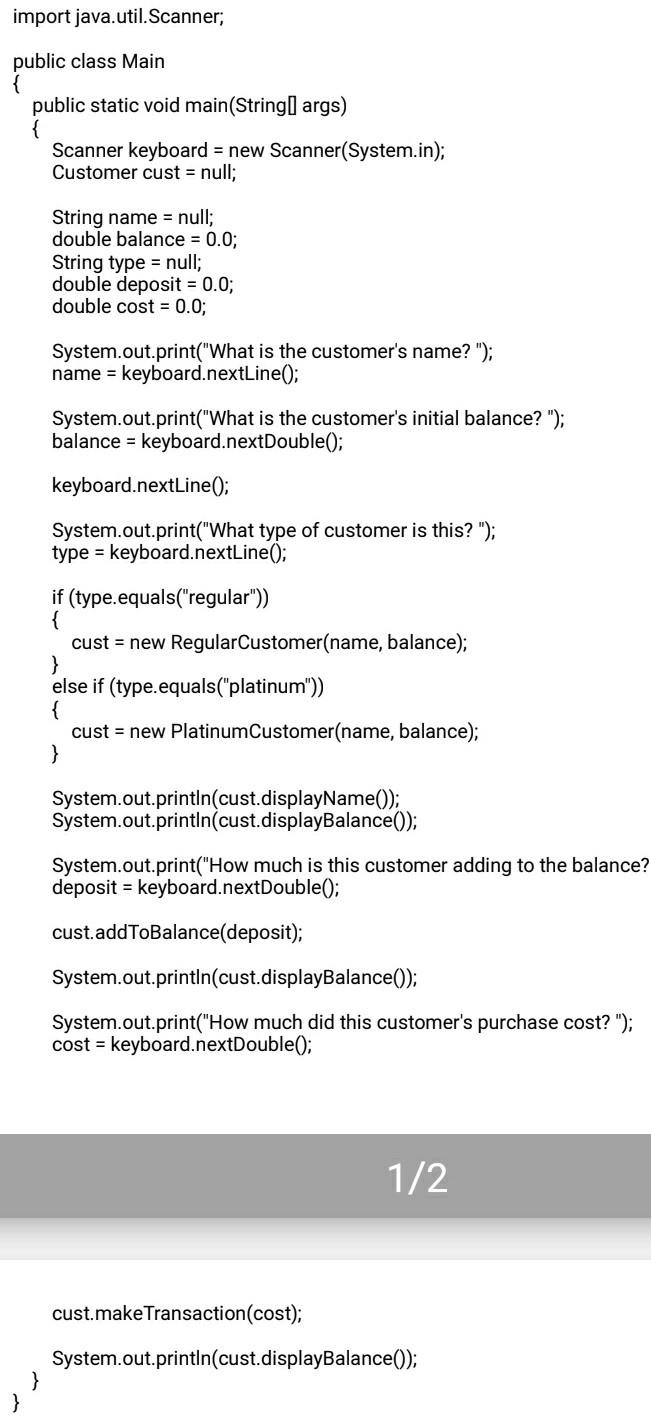Answered step by step
Verified Expert Solution
Question
1 Approved Answer
Purpose: This lab focuses on interface inheritance and the use of polymorphism to more easily control the construction of an object at runtime. Task: Create



Purpose: This lab focuses on interface inheritance and the use of polymorphism to more easily control the construction of an object at runtime. Task: Create a project called Customers_FirstName_LastName or Lab5_FirstName_LastName. This project will consist of the following files: the Main class provided on Blackboard as well as the Customer, RegularCustomer, and Platinum Customer classes you will implement. Remember to include comments summarizing the various components of this lab. 1. Review the UML class diagram included with the directions for lab 5. Keep in mind the interface inheritance relationship between Customer and the other two classes: Regular Customer and Platinum Customer. Purpose: This lab focuses on interface inheritance and the use of polymorphism to more easily control the construction of an object at runtime. Task: Create a project called Customers_FirstName_LastName or Lab5_FirstName_LastName. This project will consist of the following files: the Main class provided on Blackboard as well as the Customer, RegularCustomer, and Platinum Customer classes you will implement. Remember to include comments summarizing the various components of this lab. 1. Review the UML class diagram included with the directions for lab 5. Keep in mind the interface inheritance relationship between Customer and the other two classes: RegularCustomer and Platinum Customer. 2. Write the code for the Customer interface with each of the four abstract methods specified in the UML class diagram: displayName, displayBalance, addToBalance, and make Transaction. 3. Write the code for the RegularCustomer with the two fields and four methods specified in the UML class diagram. Additionally, remember that RegularCustomer implements the Customer interface. The four methods should have the following behaviors: a. The displayName method returns the following String with
Step by Step Solution
There are 3 Steps involved in it
Step: 1

Get Instant Access to Expert-Tailored Solutions
See step-by-step solutions with expert insights and AI powered tools for academic success
Step: 2

Step: 3

Ace Your Homework with AI
Get the answers you need in no time with our AI-driven, step-by-step assistance
Get Started


